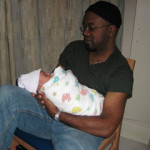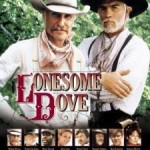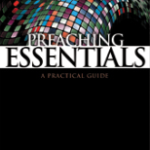ΘRGANIX by Bob Whitesel examines and explains the Millennial leadership model as compared to the Modern (Boomer) leadership model. I think this book is worth reading by leaders belonging to any generation, especially those working across generations or attempting to build multi-generational ministry. Boomer leaders will see what the next generation is doing as, and expecting of, leaders. Millennial leaders will find affirmation (or correction) for their style, and see the perspective of the previous generation. Gen-Xers (like me) will see how we have walked the line between the two styles. I was able to see where my early leadership training came from, and why I felt the need to sometimes buck that instruction as I grew as a leader. For all, there are lessons to be learned about providing authentic leadership for the next generation.
As an example, reading ΘRGANIX helped me to view a multi-generational conversation outside of my own perspective. In this conversation a Millennial shared a struggle. The Millennial was showing transparency. Because I had known this person for several years, and as a member of Gen-X, I thought this person was showing intimacy. Although I did not ask, I believe the Boomer in our group believed this disclosure showed immaturity. In fact, while the Millennial was sharing an area of needed growth, the actual act of sharing was not an act of an immature person. For my part, while I do have a level of intimacy with this person, that was not the motivation that lead the Millennial to speak.
ΘRGANIX is an acrostic for how Dr. Whitesel describes organic Millennial leadership. Normally, I would not include this much information from the book in a review, but Dr. Whitesel and the publisher have made this information available in interviews and in the Amazon book preview. A person really does have to read the book in order to understand these Millennial leadership concepts, as well as their relationship to the Modern leadership model, so this chart1 should whet your appetite, not be a substitution for reading the book.
The “O” represents a prevailing concern for “others.”
- Others and their needs drive the leader.
- Others are souls to be nurtured.
- Others are led by integrity.
Theta, the first letter of the Greek word theos stresses that “God” is the source of the burden for others and provides the power to help them.
- God strengthens the leader for the work.
- God’s presence is a sign of the leader’s need.
- God examines the leader’s participation in the missio Dei.
The prescription for health is a fitting descriptor for a millennial emphasis on first addressing the spiritual and physical health of leaders.
- The prescription for a healthy church is healthy people.
- The prescription for spiritual health results from a personal and communal effort.
- The prescription for volunteer health is a network of small groups.
A stylized g for “graffiti” illustrates the risky, colorful, and artful collages that help define millennial organizations.
- Graffiti leadership embraces risk.
- Graffiti leadership practices and repeats reconciliation.
- Graffiti leadership grows mosaic churches.
The “recycle” symbol stresses that millennial leaders recycle places, experience, and people rather than discard them.
- Recycle defective people to honor their creation in the image of God.
- Recycle resources globally and locally.
- Recycle worship.
An n represents emerging networks that connect people more quickly, efficiently, precisely, and continuously.
- Networks of relationships are just as important as organizational networks.
- Networks should be accessible.
- Network restrictions may be personal, but are necessary.
The i embodies a human form and emphasize “incarnation,” a going “in the flesh” to serve other rather than sending surrogates,
- Go in person.
- Teach and be taught.
- Gathering is a supernatural encounter.
The Jerusalem Cross with an x in each quadrant represents four types of measurement observed in Jerusalem (Acts 2:42-47), which at their core point to Christ’s work on the cross.
- Measure a church’s growth in maturity.
- Measure a church’s growth in unity.
- Measure a church’s growth in favor among non-churchgoers.
- Measure a church’s growth in conversion.
1. Whitesel, Bob. (2011). ΘRGANIX : Signs of Leadership in a Changing Church. Nashville, TN: Abingdon Press
©2012 Paul Tillman















